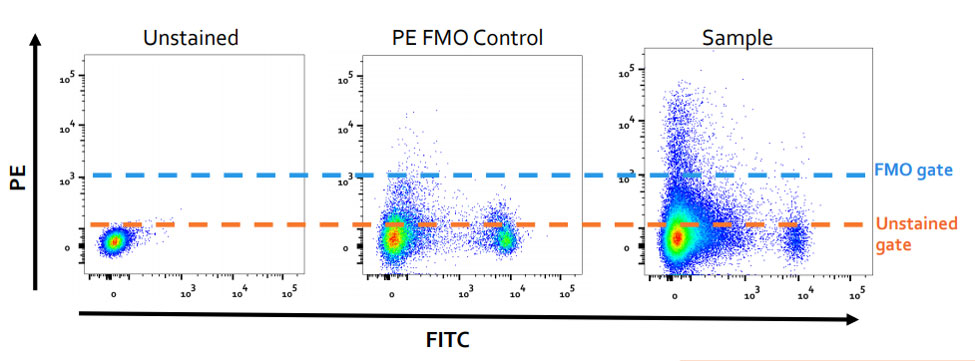FMO Controls
Fluorescence Minus One (FMO) controls are samples stained with all the fluorophores in your panel, minus one of them. They are used to set the upper boundary for background signal on the omitted label, and thus to identify and gate positive populations in multicolor experiments. FMOs are crucial when the positives are not clearly separated from the negatives due to low or variable expression level (population is dim or a smear). It is generally recommended to include FMOs for each marker when testing and optimizing a new multicolor antibody panel. Once the panel is properly validated, some of the FMOs might be dropped and only those for difficult-to-gate populations are subsequently run with each batch of fully stained samples.
FMOs are more accurate gating controls than unstained or single stained samples because they take into account the widening of negative populations due to spillover spread (see compensation controls). FMOs do not, however, control for unspecific antibody binding (see Fc block and Ab titration) or non-negligible basal expression level (see biological controls). Importantly, FMO controls are affected by both the autofluorescence and the secondary marker expression levels in the cells and therefore need to be same type of cells than the experimental samples and cannot be substituted by e.g. beads or an irrelevant cell line.

Fig. 1. PE negative populations show increased data spread in multicolor panel and require an FMO control for accurate gating of positive populations. Original image in MSKCC Flow Post-it
Additional Information:
- Bio-Rad Flow Cytometry Basics Guide: Fluorescent Minus One Controls
- FMO article at BiteSizeBio